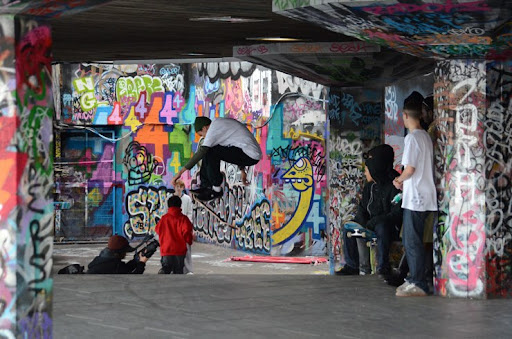Human Centred Design in the cultural sector
A view on the increasing use of design thinking to solve problems of inclusion and access to arts and culture

Simply put, human-centred design is an approach to creating products, services, experiences, spaces – anything in fact – based on a deep, empathetic understanding of the needs of the user. It employs the rapid development and testing of prototype concepts in overlapping phases rather than orderly steps. Ideo are often credited with having develop the concept and essential practice – read their guide to the history of design thinking here.
Design can be driven by and include only experts, or can involve users in some or all of its phases. Human-centred design is a refined process for co-design with users and all sorts of stakeholders, ideally at all stages. It is grounded in the belief that the people who face a challenge are the ones who hold the key to its solution.
Human-centred design is used in all fields of public engagement – from community development and health to retail. Recently, some cultural organisations have adopted its formalised processes to enable them to manage the often complex task of involving many people in the making and delivery of an experience. As Nina Simon writes in her influential book, The Participatory Museum:
How can cultural institutions use participatory techniques not just to give visitors a voice, but to develop experiences that are more valuable and compelling for everyone? This is not a question of intention or desire; it’s a question of design. Whether the goal is to promote dialogue or creative expression, shared learning or co-creative work, the design process starts with a simple question: which tool or technique will produce the desired participatory experience?
In our research at The Audience Agency, when we looked at the behaviour of the organisations who have really inclusive, representative audiences, a common thread emerged. Most were adopting some – if not all – of the habits of human-centred design
In our research, we interviewed cultural practitioners from organisations which see themselves as pioneers of inclusive practice. Many regard themselves as designers. Derby Museums, a thought leader in this space, has created a Design Thinking handbook to guide its practice both externally and internally. Human-centred design is more than functional process, it is the organising philosophy, setting the culture of the Museum.
Many practitioners believe that the future of cultural institutions lies in their capacity to towards a more people-centred, responsive and collaborative way of working. They identified 3 aspects of human centred design as critical to this culture shift:
• Empathy. This is a specific part of the process in which designers develop a deep and personal understanding of the issues affecting users or a community: “You have to meet people where they are, stay focused on their challenges”
• Ideation. The generation of ideas from a great diversity of sources – the more diverse and divergent the better, both for reasons of creativity and of inclusivity.
• Prototyping. In-field experimentation is key to testing the real-world value and fitness-for-purpose of those ideas. In human-centred design, this is done in a way that engages with users. The “mindset of experimentation” forms an essential pre-condition of people centred approaches.
Social design
While for some practitioners, human-centred design is by its very nature radical and people-centred, others suggest that it can still be an essentially expert-led process which exploits the input of users without actually handing over power and/or leading to real change. As one interviewee pointed out, Disney are human-centred design geniuses, while another argued that “co-design is a weasel word” used to give people a false sense of ownership. This may be why social design is recognised by many as a separate discipline.
Social design, originally applied to social and related services, employs design methodologies in order to tackle complex human issues, challenging social inequality as the priority. The designer is aware of their responsibility in society, and of the use of the design process to bring about social change and social justice. It often prioritises user groups and people who are marginalized, and its specific conventions may lend themselves to initiatives actively aiming to be citizen-led. Social design thinking, then, is a mechanism not just for involvement but power-sharing.
Some museums and arts organisations have adopted social design methods as agents for sustainable change towards the holy trinity of environmental, social and personal wellbeing.
